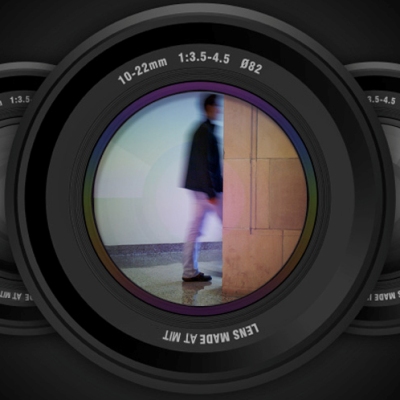Researchers at the Massachusetts Institute of Technology (MIT) Media Lab have developed a camera that can peer around corners. They used a femtosecond laser and employed the principle on which periscopes are based, to achieve this feat.
 A camera that peers around corners
A camera that peers around corners
Earlier, the researchers at the MIT lab had released a slow-motion video of an experiment that showed a burst of light traveling inside a plastic bottle. This experiment was actually designed for the camera that can peer around corners.
In periscopes, angled mirrors are used to redirect light. In this experiment, the surfaces of ordinary doors, floors and walls, which are normally not considered as reflective, have been utilized. Femtosecond lasers emit very short bursts of light in the range of quadrillionths of a second. The system used lasers to hit a wall opposite a doorway, which got reflected and went into the room, where it bounced around and came back and hit a detector. The detector has the sensitivity to take measurements in trillionths of a second. The system gauges the distance traveled by the light by the time it consumes for reaching the detector. Light is bounced off different places on the wall and the returning light is measured. The times taken for the returning light to hit different sections of the detector are compared with each other and this comparison helps create a picture of the geometry of the room.
MIT Media Lab associate professor, Ramesh Raskar, led the research. The researchers fired femtosecond laser bursts of light at an opaque screen. Objects were held in a suspended state before another panel, which represented a room’s back wall. The light from the opaque screen was reflected on to the objects. An ultrafast sensor was used to collect the data. A former postdoc in Raskar’s group, Andreas Velten, performed these experiments in chemist Moungi Bawendi’s lab at MIT.
Image-reconstruction algorithms to process this data were developed by the team. These algorithms delivered three-dimensional images that were recognizable, but blurry.
The system on further development may be used by the police, firefighters, other emergency responders and vehicle navigation systems. The device may also find use in the medical field, when used along with endoscopic medical devices for producing images of out of sight regions in the human body.